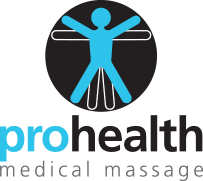Therapeutic Medical Massage: Effective Treatment for Frozen Shoulder
What is Frozen Shoulder?
Frozen Shoulder is a condition of restricted range of motion of the shoulder. Pain and lack of passive and active range of motion, in abduction (lifting your arm to the side away from your body) and external rotation are the main indicators of Frozen Shoulder.
Frozen shoulder can have several different causes. Frozen shoulder can be defined as either a primary or secondary condition. Primary Frozen Shoulder is idiopathic (unknown origin). Secondary Frozen Shoulder is brought on by a pre-existing condition such as an impingement syndrome, subacromial bursitis, rotator cuff tendonitis or tears, dislocations and inflammatory synovitis. Frozen Shoulder can also be caused by trigger points in the rotator cuff muscles (primarily in the subscapularis muscle), postural disfunction and disuse. People with systemic diseases such as diabetes are more likely to develop frozen shoulder, especially those who are insulin dependent and have had diabetes for longer than 10 years.
There are three phases during the Frozen Shoulder condition. They are labeled as the three main stages of injury: acute (freezing phase), sub-acute (frozen phase) and chronic (thawing or resolution phase).
Symptoms can range during different phases of the condition. During the acute phase, pain is the most common symptom. During sleep, the client will have great difficulty lying on the affected side. The acute and sub-acute phases blend together resulting in both pain and stiffness. The pain will begin to diminish and stiffness becomes the primary symptom. The stiffness will be experienced as diminished range of motion in abduction, external and internal rotation, resulting as pain at the end ranges. During the chronic phase, pain will begin to lessen and range of motion will begin to return. “Although frozen shoulder is often said to resolve spontaneously in two years, several studies have shown that people can remain symptomatic for as long as five to ten years”.
How can Therapeutic Massage help Frozen Shoulder?
Therapeutic Massage is an effective treatment for Frozen Shoulder. Relaxation techniques, Trigger Point Therapy and Advanced Therapeutic Techniques to the muscles of the rotator cuff and associated musculature are all indicated for treatment of Frozen Shoulder. Therapeutic Massage can help eliminate pain, remove adhesion, re-align scar tissue and increase range of motion. Therapeutic Massage techniques can effectively address all three stages of this condition minimizing the symptoms and eventually returning the client to normal health.
For more information on Frozen Shoulder and Therapeutic Massage treatment protocols, please contact me at [email protected]

